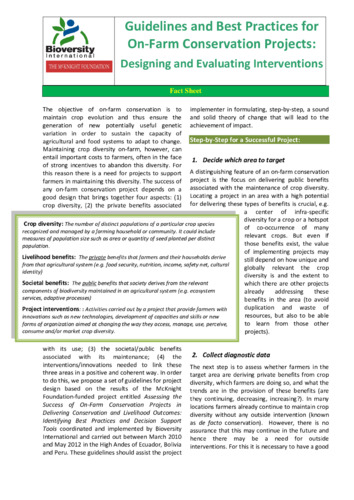Guidelines and best practices for on-farm conservation projects: designing and evaluating interventions
The challenge of on-farm conservation projects is to identify, design and implement interventions that make the conservation of crop diversity compatible with improved livelihoods and well-being among the farmers who conserve it. The success of any on-farm conservation project depends on a good design that brings together four aspects: crop diversity; the private benefits associated with its use; the societal/public benefits associated with its maintenance; the interventions/innovations needed to link these three areas in a positive and coherent way. In this brief, the authors propose a set of guidelines and best practices for on-farm conservation projects for evaluating their effectiveness, based on the results of a McKnight Foundation-funded project – ‘Assessing the Success of On-Farm Conservation Projects in Delivering Conservation and Livelihood Outcomes: Identifying Best Practices and Decision Support Tools’. The project was coordinated and implemented by Bioversity International and carried out between March 2010 and May 2012 in the High Andes of Ecuador, Bolivia and Peru.

